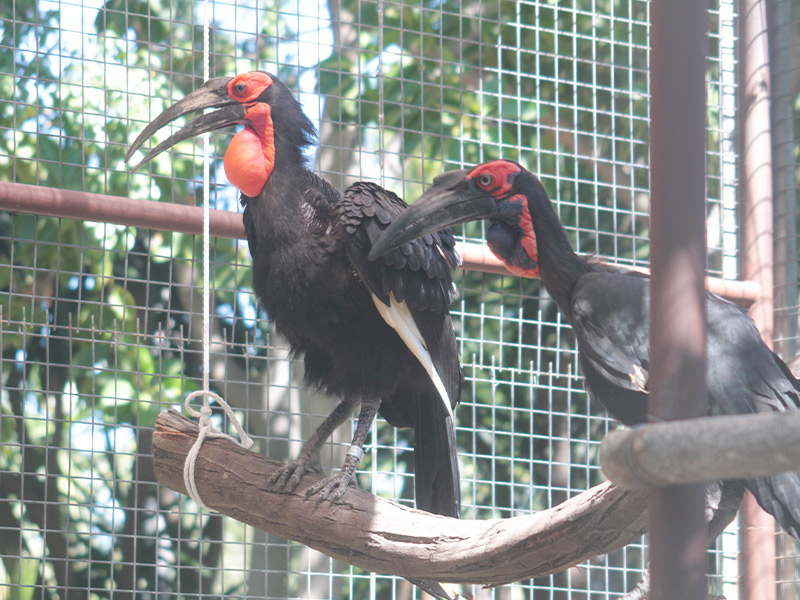Its geographic range extends across the region of Ethiopia, over a wide area of north-central Africa.
Sexual dimorphism is evident, with the male having a continuous red coloration on the face and neck, while the female has a blue coloration on the throat. It differs from other hornbills in that it is well adapted to move and live on the ground. This is demonstrated by their large beaks, head and body, as well as their stout legs in comparison to their overall size. It relies heavily on vision and this is why it has long eyelashes to help keep dirt and sunlight out of its eyes.
It lives in social groups of two to eight individuals, within each of these small groups a dominant (alpha) pair of male and female birds is chosen, depending on their size and age, who will be the only ones to have offspring and the rest of the flock serve as auxiliary birds. They nest in hollows of trees or cliffs. A clutch consists of 1-3 eggs and hatching takes place 37 to 43 days later. Their reproduction is cooperative; the male and other hornbills in the group provide food for the incubating female and once the chicks hatch, the young are cared for by their parents and the rest of the birds in the flock.
Their main threat is the loss of their habitat.



















